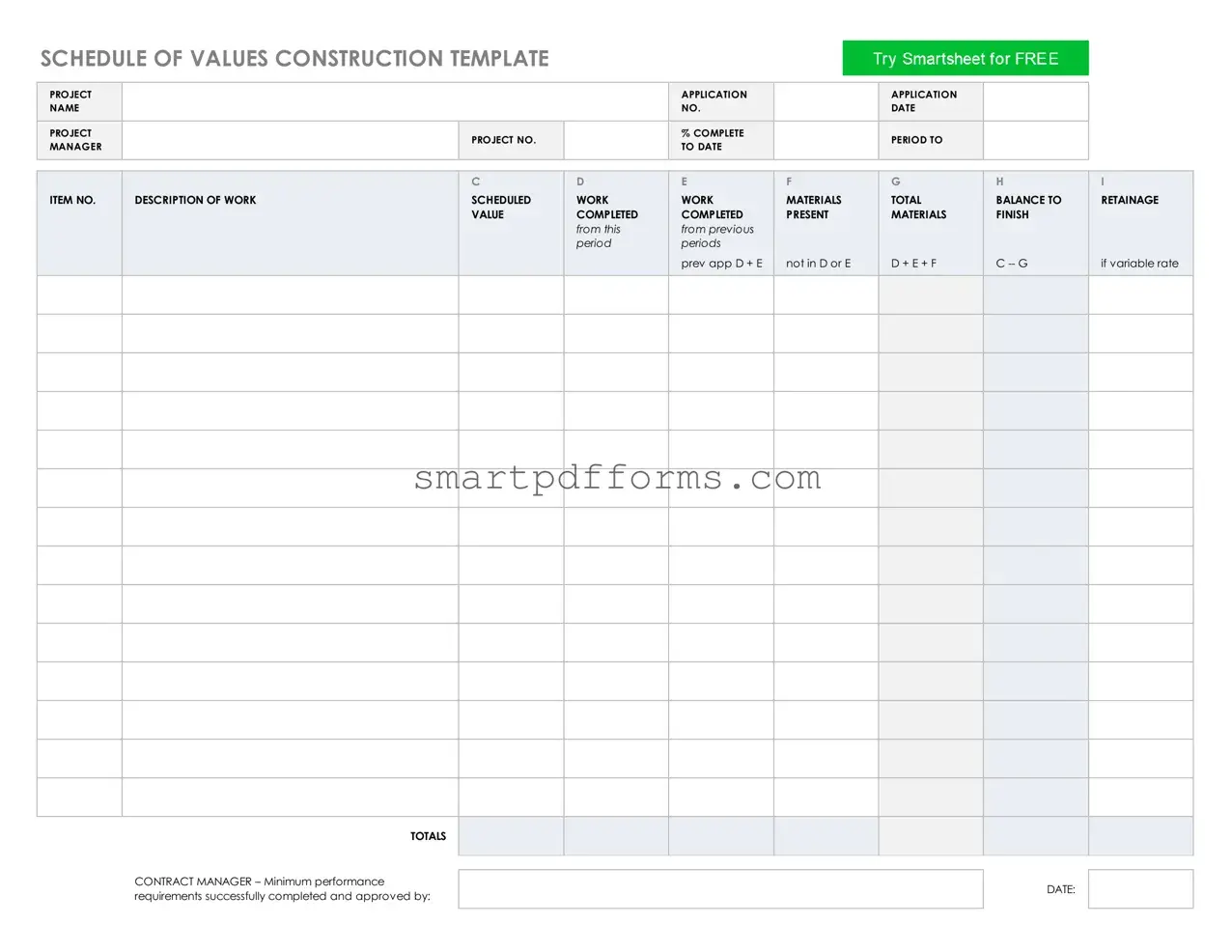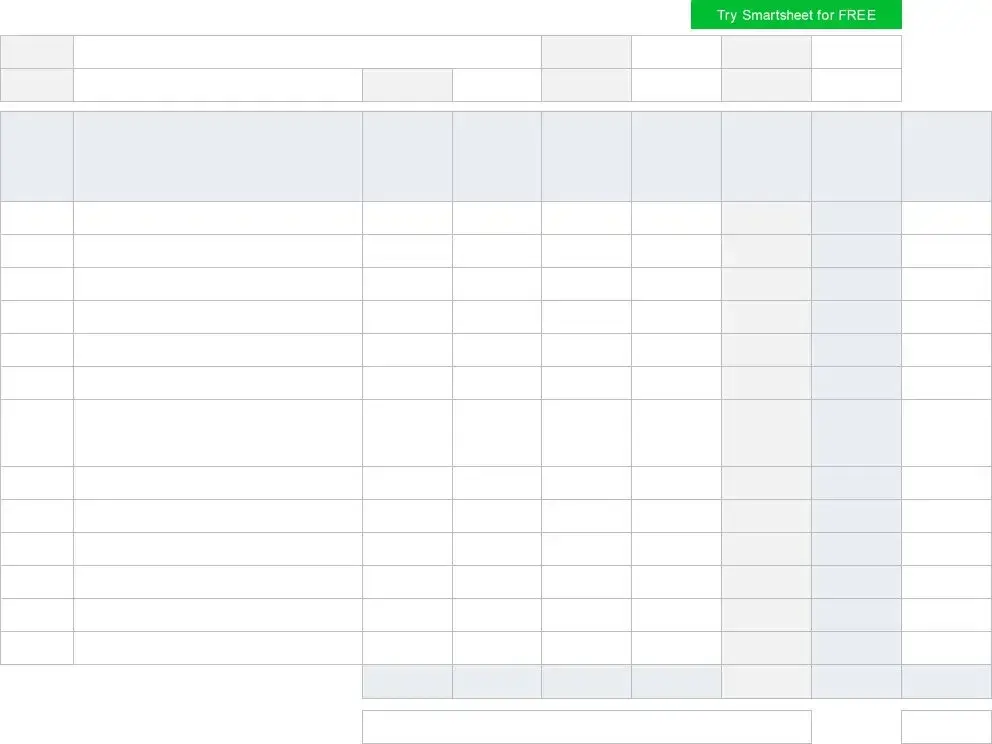In the realm of construction management, the Schedule of Values form plays a pivotal role as it meticulously outlines the financial aspects of a project. This form acts as a comprehensive list that breaks down the contract into manageable parts, assigning a value to each segment of work, including materials and labor. It is used not only to track the progress of the project against its budget but also to manage payments to contractors and subcontractors. Detailed within the form are sections such as the description of work, scheduled value, work completed from the previous period, work completed to date, materials present on site, and the total balance to finish, among others. A key feature is the retainage—a portion of the contract price deliberately held back until the project reaches a specific milestone or completion—to ensure contractor performance. Contractors must submit this document for each payment application, updating it to reflect the current project status, which in turn, is reviewed by the project manager. This process underscores the importance of accuracy and timeliness in submissions. Despite the straightforward goal of the Schedule of Values form to facilitate clear financial management and communication among parties involved in a construction project, potential complexities arise, particularly in ensuring all details are accurately captured and agreed upon by all stakeholders. The disclaimer included highlights the necessity for users to independently verify the information, acknowledging the limitations in guaranteeing the absolute accuracy or reliability of the templates provided.


